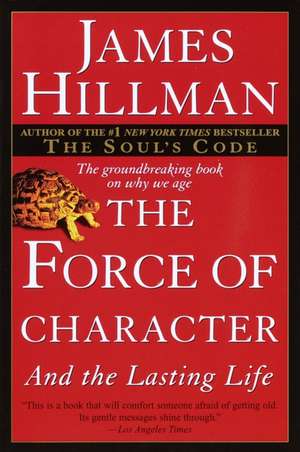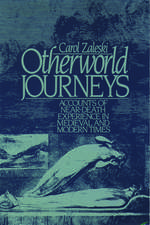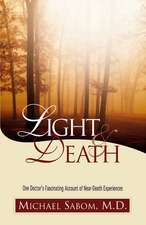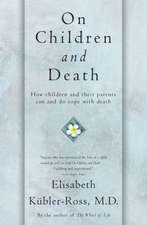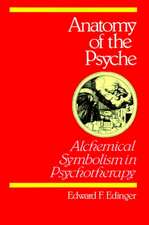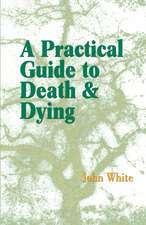The Force of Character: And the Lasting Life
Autor James Hillmanen Limba Engleză Paperback – 30 iun 2000
"Character requires the additional years," declares Hillman. "The last years confirm and fulfill character." Far from blunting or dulling the self, the accumulation of experience concentrates the essence of our being, heightening our individual mystery and unique awareness of life. Drawing on his grounding in Jungian psychology, Hillman explains here the archetypes and myths that govern the self's realignment in our final years.
The Force of Character follows an enriching journey through the three stages of aging--lasting, the deepening that comes with longevity; leaving, the preparation for departure; and left, the special legacy we each bestow on our survivors. Along the way the book explores the meanings and often hidden virtues of characteristic physical and emotional changes, such as loss of memory, alterations in sleep patterns, and the mysterious upsurge in erotic imagination.
Steeped in the wisdom of a lifetime, radiant with Hillman's reading in philosophy, poetry, and sacred texts, charged with a piercing clarity, The Force of Character is a book that will change--and affirm--the lives of all who read it.
Preț: 84.62 lei
Preț vechi: 101.24 lei
-16% Nou
16.19€ • 16.80$ • 13.54£
Carte disponibilă
Livrare economică 22 februarie-01 martie
Livrare express 11-15 februarie pentru 39.71 lei
Specificații
ISBN-10: 0345424050
Pagini: 270
Dimensiuni: 140 x 208 x 15 mm
Greutate: 0.32 kg
Ediția:Ballantine Bks.
Editura: BALLANTINE BOOKS
Notă biografică
Extras
In our competitive societies, "lasting" has come to mean outlasting. "I've outlived my father and both grandfathers!" "According to my doctor, I should have been dead three years ago." "My insurance company is losing money on me. I've beat my pension plan and cashed in on Social Security, far more than I ever put in." Surely goodness and mercy shall follow me all the days of my life, because my life has outlasted the expectancy curve.
Not only have I defeated my genetic inheritance, my childhood schoolmates, and the actuaries, I've held off death itself. Life: a contest with all others and with death, so that living longer becomes a victory, repeating each year on my birthday that famous passage from St. Paul: "Death is swallowed up in victory.... O death, where is thy sting?"
Our experience of aging is so embedded in numbers of years left to live, as given by longevity tables, that we can hardly believe that for centuries late years were associated not with dying but with vitality and character. The old were not mainly thought of as limping toward death's door, but were regarded as stable depositories of customs and legends, guardians of
local values, experts in skills and crafts, and valued voices in communal council. What mattered was force of character proven by length of years. Mortality was associated with youth: stillbirth and death in infancy; battle wounds, duels, robberies, executions, and piracy; the occupational hazards of farming, mining, fishing, and of childbirth; family feuds and jealous rages; epidemics and plagues that carried off populations in the prime of life. Cemeteries were dotted with the short graves of children.
The intimate coupling of longevity and mortality, that link which monogamously marries the archetype of old with the idea of death, takes hold of our minds only in the nineteenth century, with the advance of demographics. In France, positivist philosophy promoted the statistical study of populations, which moved death from the realm of the private and spiritual to that of sociology, politics, and medicine. The statistics on life span gave evidence of a falling death rate, which was read
to indicate the progress of civilization. Society as a whole could prove its improvement by advancing longevity figures, and longevity could be advanced by new medical methods (vaccination, pasteurization, sterilization) and programs of public health (potable water; sewage treatment; ventilation).
Demographics took an even firmer grip when Emile Durkheim, one of the fathers of sociology, analyzed suicide statistics, showing that each district in France had a suicide rate that hardly varied from decade to decade. A predictable number of people in any given district could be expected to commit suicide in the coming year. When the incidence of suicide dissolves into the sociology of class, occupation, heredity, religion, age, and so on, then the act of suicide becomes a fact of sociology quite apart from the psychology of the individual who commits it. The statistical fact becomes a societal force, dooming a definite percentage in each district to die by their own hands. Data become destiny.
The life expectancy curve carries a force of its own. If you place yourself on it as a female teenager, say, you may have a life expectancy of at least seventy. At sixty, you find your expected longevity has risen; it may now be seventy-eight, or more. Once you arrive there, the statistical tables may place your life term at eighty-six. And so on. Even if you reach one hundred, actuarial statisticians speak of the "conditional probability" that there are a few more months or years ahead. Statistics con-
firm that the longer you last, the longer you will last, so that with each day of aging you may expect another day on the "actuarial curve to infinity." The curve cannot predict when your longevity will end; instead, it seems to bear you interminably forward. Rather than carrying you toward death and revealing the bare fact of your mortality, the curve functions as a statistical annunciation of immortality!
If "lasting" means more than outlasting statistical expectations, then what is it that lasts? What is the "it" that persists and endures? What could possibly last through all the events of a long life, remaining constant from start to finish? Neither our bodies nor our minds stay the same; they cannot avoid change. What does seem to hold true all along and to the end is an enduring psychological component that marks you as a being different from all others: your individual character. That same you.
But what does "same" mean? I have changed so much and am so different, and yet despite all changes something continues to assure me of being the same. I could lose my social identity, my physical configuration, and my personal history, yet something will remain the same, outlasting these radical vicissitudes. This book maintains that the idea of character provides this lasting core.
If sameness is the philosopher's term for what we experience as our character, we will have to discover more about this deep principle "sameness"--what it is and how it works. No small job, since philosophers have been thinking about sameness ever since Plato made the Same and the Different two of the most basic ideas to enter into the existence of things, form our thinking about them, and even make them possible.1
Philosophers play with the riddle of sameness. Take, for instance, your favorite pair of wool socks. You get a hole in a heel and darn it. Then you get a hole in the big toe--and you darn that, too. Soon the darned holes are more of the sock than the original wool. Eventually, the whole darned sock is made of different wool. Yet it's the same sock. In relation to its looks and in relation to its partner on your other foot, it is still the same sock. They go out together and lie together in the drawer; and even in relation to itself, its identity, it is the same sock, though it is different.
Here philosophers can apply Plato's archetypal ideas of Sameness and Difference. The sock is entirely different from the original as far as the wool goes, but its shape has remained the same. It never becomes a different sock, despite the radical material alteration. Its material is different; its form is the same.
By "form," philosophers mean the look of the sock, by which you recognize it as a sock. (Tube socks raise conceptual problems!) When can a sock not look like a sock and still be a sock? Philosophers also mean by "form" the sock's function as a match to its partner and to your foot (form following function). A third meaning interests us most: form as the active principle governing the way the new wool integrates into the old sock. Form is thus visible shape, and the shaping force of the visible. Do you see that we are getting closer to the notion of character?
A human body is like that sock, sloughing off its cells, changing its fluids, fermenting utterly fresh cultures of bacteria as others pass away. Your material stuff through time becomes altogether different, yet you remain the same you. Not one square inch of visible skin, not one palpable ounce of bone is the same, yet you are not someone different. There seems to be an innate image that does not forget your basic paradigm and that keeps you in character, true to yourself. The idea of DNAseems too tight to hold the psychic dimensions of our unique image. To embrace our complexity we need a larger idea.
Some Greek philosophers and thinkers of the medieval church attributed this consistency in the midst of alteration to the idea of form. Some further claimed that form individualizes. What causes each person and each thing to be different from other persons and things is the active force of form. No two forms can be alike. We are each maintained in our specific individual image by the principle of form. To use one of William James's suggestive terms, we are each an "each." As "each"es, we are unique because each of us has, or is, a specific character that stays the same.
It is most important here to grasp that we are unique qualitatively. You have your style, your history, a set of traits, and a destiny. You are essentially different from me by virtue of the lasting sameness of each of our individualized characters.
If the difference between you and all others were defined by physics, logic, politics, economics, and law, we would each be a numerical "one" without any necessary characteristics. The law says, "All are equal under the law"; politics says, "One person, one vote"; physics says, "No two bodies can occupy the same place at the same time"; economics puts all eaches into categories--consumers, workers, owners, employers. When each one is interchangeable with any other one, individuality requires nothing more than a different ID number. Since uniqueness depends on the qualitative differences forming the consistent sameness of your individuality, the idea of character is necessary to keep us different from one another, and the same as ourselves.
Let's go back to the sock. If what outlasts the wool is the form, then a preoccupation with physical decay--with where the sock is wearing thin--misses a crucial point. Sure, the sock is showing holes, and stitching up its weak places keeps it functional. But our minds might more profitably be thinking about the mystery of this formal principle that endures through material substitutions. Surely the lasting strength of character counts as much as the durability of wool.
Sometimes the stitchings and darnings don't take. Medicine watches carefully for rejection after transfusions, organ transplants, and bone grafts. The formal principle that guarantees sameness despite the introduction of exotic material is named by medicine the immune system. This system accepts or rejects replacements in accord with its own innate code. The new materials must be integrated into the integrity of the person. Or, as they might have said in church debates nine hundred years ago, the material must be accommodated to the form. It must fit my innate image. The new part--kidney, hip, or knee--must become my knee. The new wool must become me.
What converts this "it" into "me"?
Modern psychology, regardless of school, understands the assimilation of events into a "me" to be a function of character. The schools of psychology use other words for character, such as "personality," "ego," "self," "behavioral organization," "integrative structure," "identity," "temperament." These substitute terms fail to characterize the styles of assimilation that are the hallmarks of individuality. We each respond to the world differently, handling our lives in a particular style. The word "character" implies a bundle of traits and qualities, habits and patterns; it requires descriptive language such as we find in character references, letters of recommendation, primary school report cards, scripts and novels, performance criticism, obituaries. "Ego," "self," "identity" are bare abstractions, telling us nothing of the human being they supposedly inhabit and govern. At best, these words refer to the unifying sameness of people while neglecting their unique differences.
It is refreshing to discover that some of the oldest and most basic ideas of philosophy--Same and Different, Form and Matter--are actually at work in our daily lives, even in our bodies. I find it a delight that these old-fashioned woolly principles are immediately practical and can be discussed as bodily facts. Why must we be exhorted to build character and strengthen character when character is already a given, the staying power that keeps us who we are and holds our bodies to their form? Imagine the body as an ancient philosopher, the body as a place of wisdom--an idea already announced in the book titles of two medical specialists, Walter Cannon and Sherwin Nuland.
Cannon in the 1930s and Nuland in the 1990s both say the body's physiology knows what it is doing. There is a wisdom at work. The idea of character makes more understandable this governing wisdom. Moreover, if we regard character as more than a collection of traits or an accumulation of habits, virtues, and vices, but rather as an active force, then character may be the forming principle in the body's aging. Aging then becomes a revelation of the body's wisdom.
I am emphasizing form in the organization of matter for two reasons. First, to counter the hustlers of materialism, who ask us to buy the idea that we are complex pieces of biotechnology, best compared with the newest computer chips. Whatever form we show results from underlying biogenetic impulses. Form can be reduced to matter; it obeys matter's laws and is shaped by genetic material. Since matter does the forming, there is no need for a separate idea of form.
A succinct, well-written--and fantastic--passage from one of the world's leading cognitive scientists represents a host of similar statements in similar books.
The mind is a system of organs of computation, designed by natural selection to solve the kinds of problems our ancestors faced in their foraging way of life.... The mind is what the brain does; specifically, the brain processes information, and thinking is a kind of computation.... The various problems for our ancestors were subtasks of one big problem for their genes, maximizing the number of copies that made it into the next generation.2
Why do I call this fantastic? Because this account of foraging ancestors, genes facing problems, and natural selection as deus ex machina leaves the big questions begging. Moreover, the statement is set down axiomatically, not as myth or as reductive simplification, but as self-evident truth, and that allows Pinker to go on blithely saying that psychology is engineering.
To reduce psychology to engineering brutalizes the meaning of form. My shape is more than how I'm put together. We all know that the way to last is to stay in shape, but "staying in shape" means more than working out. Do diet, exercise, and bed before midnight satisfy the needs of your shape? The first meaning of "shape" is "create," which relies upon a force that is invisible and yet makes each creature visible in its own style. The blanket term "information processing" covers over the history of subtle thought carried in the idea of form.
My second reason for insisting upon form is to keep a psychological viewpoint when addressing psychological questions. After all, life to the one who lives it is harassed by psychological perplexities for which biochemistry and brain physiology offer little comfort. Why live, why live long and with the probability of biological impairment are questions irrelevant to these sciences. Even should they remove the impairment and prolong the years, the "why" questions remain which no "how" answers can satisfy.
Recenzii
--San Francisco Chronicle
"This is a book that will comfort someone afraid of getting old. Its gentle messages shine through."
--Los Angeles Times
"Provocative . . . Hillman breathes new life into a venerable concept, and in so doing helps us to rediscover the soulful possibilities of aging."
--Publishers Weekly
Textul de pe ultima copertă
"Character requires the additional years", declares Hillman. "The last years confirm and fulfill character". Far from blunting or dulling the self, the accumulation of experience concentrates the essence of our being, heightening our individual mystery and unique awareness of life. Drawing on his grounding in Jungian psychology, Hillman explains here the archetypes and myths that govern the self's realignment in our final years.
The Force of Character follows an enriching journey through the three stages of aging -- lasting, the deepening that comes with longevity; leaving, the preparation for departure; and left, the special legacy we each bestow on our survivors. Along the way the book explores the meanings and often hidden virtues of characteristic physical and emotional changes, such as loss of memory, alterations in sleep patterns, and the mysterious upsurge in erotic imagination.
Steeped in the wisdom of a lifetime, radiant with Hillman's reading in philosophy, poetry, and sacred texts, charged with a piercing clarity, The Force of Character is a book that will change -- and affirm -- the lives of all who read it.
